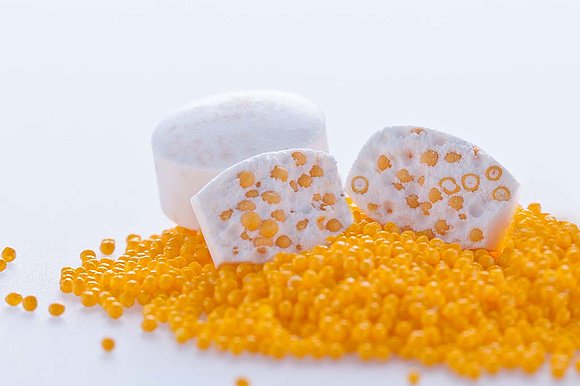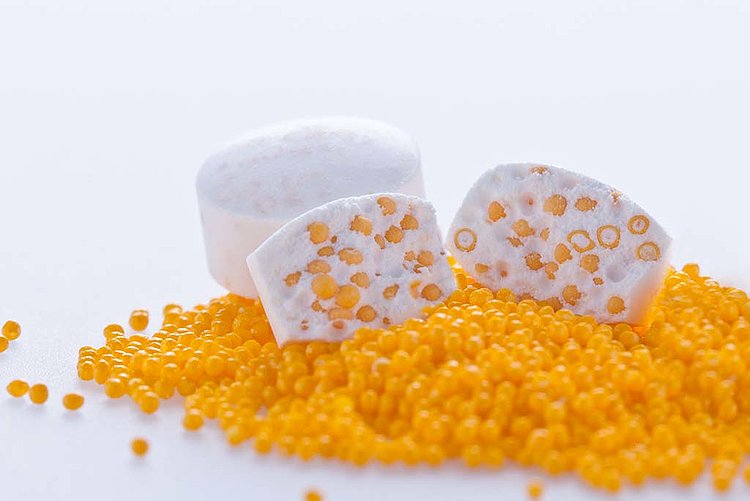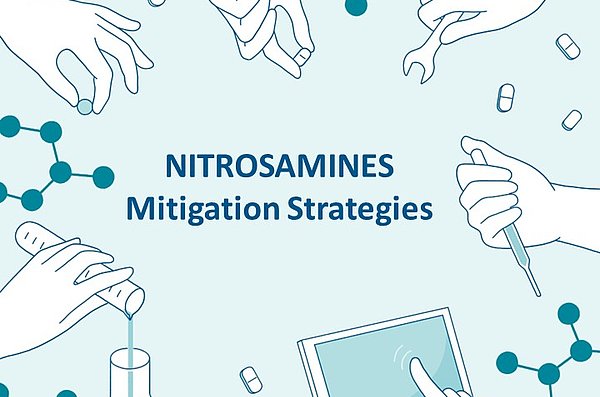Introduction:
Oral solid dosage forms (OSD) present numerous options, over semi-solids and liquids, to enhance patient acceptance to medicines. Recent publications focusing on patient adherence and acceptance, highlight pellets within multi-particulate drug delivery systems as one of the leading solution to overcome typical challenges encountered in the developments of pharmaceuticals for heterogeneous patient groups. [1,2,3]
Pellets can be defined as tiny, free-flowing spherical particulates made by agglomeration of fine powders or granules of drug substances and excipient.
Pellets are small units containing one or several active pharmaceutical ingredients (API) and can combine several characteristics going from different APIs layering up to functional coatings like taste masking or delayed release.
Due to their very small particle size comprised between 0.1 to 2.0 mm, pellets offer several advantages as following but not limited to:

Pellets are available on the market either as starter pellets or can be manufactured by extrusion followed by a spheronisation step to achieve round beads. [5]
In this case the API can already be included within the beads during the extrusion step. During the extrusion step, it is essential to use proper binders and optimize the amount of solvent used to achieve very stable pellets by high throughput. The obtained pellets a so called matrix pellets.
Low viscosity HPMC (PHARMACOAT® 603/TYLOPUR® 603) can be used as a binder whereas the L-HPC grade LH-31 as a filler optimizing the physical stability of the pellets compared to microcrystalline cellulose. Besides the higher production throughput, lower friability and even faster disintegration of the pellets could be achieved compared to the formulation based on microcrystalline cellulose (MCC) and super-disintegrant (Shin-Etsu technical information L-011).
In the case of an amorphous solid dispersion development based on hot melt extrusion, the melted API/Polymer filaments can be easily cut into small particles followed by a spheronisation step.[6]
Independently of the pathway, those pellets can be further processed and functional coating layers can be applied.
Starter pellets are available on the market with a typical particle size between 100 to 1400µm. They are mostly based on sugar or microcrystalline cellulose. However, the use of tartaric acid and dibasic calcium phosphate is also possible as excipient. In contrary to matrix pellets, they do not contain any API. [7]
When starter pellets are used, the active pharmaceutical ingredient is layered onto them by coating.
To do so, the API is dissolved eventually suspended in a binder solution and applied on the beads. This technique is used either with active ingredients from the BCS class 1 or in case of an amorphous solid dispersion system.
Further coating layers can be easily applied such as a protective barrier in case of the coating with incompatible APIs or functional coatings like enteric or taste masked (Shin-Etsu technical information A-044, L-015).
The layering process takes place in a fluid bed using the wurster technology or tangential spraying.
One major challenge during the coating is the sticking of the pellets limiting to very slow processing time. In aqueous based systems, the switch from more hydrophilic polymer PHARMACOAT® or TYLOPUR® 603 (hypromellose) to a more hydrophobic cellulose derivative like METOLOSE® SM-4 (methylcellulose) provides lower to no stickiness at high spraying rates (Shin-Etsu technical information M-002).


Pellets are commonly put into capsules or sachets. In recent publication, the so called MUPS tablets (multiple unit pellets systems) are designed to obtain a modify release of the APIs such as enteric coated pellets. These tablets incorporate the pellets, aiming to maintain the integrity of the functional coating and ensure even distribution of the pellets during the tableting process. Notable marketed products are the products NEXIUM® or Esomep®.
[1] Gandhi, B.R. (2013). Multiparticulates Drug Delivery Systems: A Review. https://ijpcsonline.com/files/files/69-568.pdf
[2] Lewis, C.J. & Burley, J. & Lang, Alexandra & McGovern, J. & Simmons, J. & Segal, Joel. (2018). Designing a multiparticulate administration device for paediatrics – A user based approach (2). International Journal of Pharmaceutics. 536. 494-495. https://doi.org/10.1016/j.ijpharm.2017.08.017
[3] Ternik, R.L. (2016). Oral Drug Product Use in the Elderly Patient Population. In: Stegemann, S. (eds) Developing Drug Products in an Aging Society. AAPS Advances in the Pharmaceutical Sciences Series, vol 26. Springer, Cham. https://doi.org/10.1007/978-3-319-43099-7_15
[4] Rawat, S. S., Rai, A., Rathi, R., Sharma, A., Huanbutta, K., Sangnim, T., & Singh, I. (2023). Medicated straw: an innovative drug delivery system for paediatrics. Expert opinion on drug delivery, 20(3), 313–314. https://doi.org/10.1080/17425247.2023.2171013
[5] Ghebre-Selassie, I. (Ed.). (1989). Pharmaceutical Pelletization Technology (1st ed.). CRC Press. https://doi.org/10.1201/9781003066231
[6] Treffer, D., Wahl, P. R., Hörmann, T. R., Markl, D., Schrank, S., Jones, I., Cruise, P., Mürb, R. K., Koscher, G., Roblegg, E., & Khinast, J. G. (2014). In-line implementation of an image-based particle size measurement tool to monitor hot-melt extruded pellets. International journal of pharmaceutics, 466(1-2), 181–189. https://doi.org/10.1016/j.ijpharm.2014.03.022
[7] Kállai-Szabó, N., Lengyel, M., Farkas, D., Barna, Á. T., Fleck, C., Basa, B., & Antal, I. (2022). Review on Starter Pellets: Inert and Functional Cores. Pharmaceutics, 14(6), 1299. https://doi.org/10.3390/pharmaceutics14061299
[8] Zuccari, G., Alfei, S., Marimpietri, D., Iurilli, V., Barabino, P., & Marchitto, L. (2022). Mini-Tablets: A Valid Strategy to Combine Efficacy and Safety in Pediatrics. Pharmaceuticals (Basel, Switzerland), 15(1), 108. https://doi.org/10.3390/ph15010108
[9] Kurashima, H., Uchida, S., Kashiwagura, Y., Tanaka, S., & Namiki, N. (2020). Evaluation of Weight Variation in Mini-Tablets Manufactured by a Multiple-Tip Tool. Chemical & pharmaceutical bulletin, 68(10), 981–988. https://doi.org/10.1248/cpb.c20-00460

Solid pharmaceutical dosage forms, such as tablets and capsules, are the most used drug delivery systems, favored for their ease of production and patient preference.
Read more
In June 2022, Persistence Market Research presented a market outlook of orally disintegrating tablet (ODT) for the next years (2022 - 2025). According to this research “The ODT Market is likely to have compound annual growth rate (CAGR) of 8.5% over the forecast period.
Read more
Nitrosamine Contamination of Drug Products is a topic of concern for pharmaceutical companies. As such, it deserves our utmost attention.
Read more